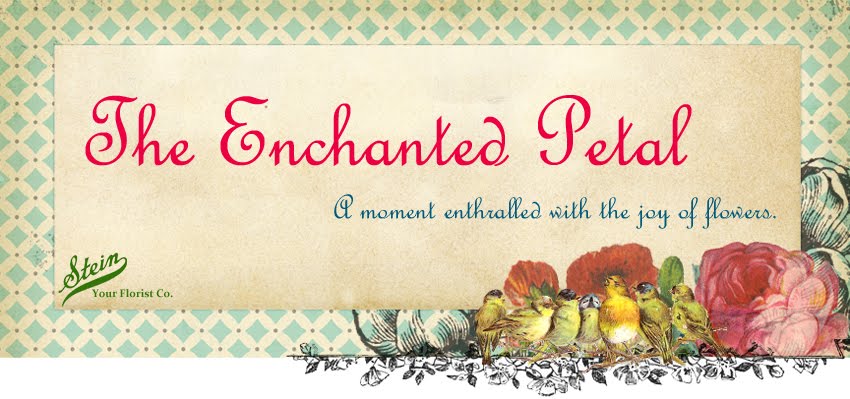 As part of our 125th Anniversary celebration
at Stein Your Florist Co. we are sharing a year of floral education, November
1, 2012 thru October 31, 2013. Each day we will post something new on our Facebook page to share
our knowledge of our favorite things, flowers and plants and we'll be updating
our blog every 5 days or so. No need for pencils and notebooks, just sharing
some simple lessons in floristry.
As part of our 125th Anniversary celebration
at Stein Your Florist Co. we are sharing a year of floral education, November
1, 2012 thru October 31, 2013. Each day we will post something new on our Facebook page to share
our knowledge of our favorite things, flowers and plants and we'll be updating
our blog every 5 days or so. No need for pencils and notebooks, just sharing
some simple lessons in floristry.
Day 166 -
Hardy cacti and other succulent plants are accustomed to desert conditions and
prefer bright, indirect light or direct sun. Water them thoroughly and evenly,
allowing them to dry out completely in between waterings. If the soil becomes
too hard and causes water to run off, place the pot in water just to cover the
soil, and allow it to soak for about 30 minutes.
Day 167 -
Reminiscent of Heather, Leptospermum is a genus of about 80-86 species of
plants in the myrtle family. Most species are endemic to Australia, with the
greatest diversity in the south of the continent; but one species extends to
New Zealand and another to Malaysia. They are shrubs or occasionally small
trees with dense branching. The leaves are evergreen and the flowers are up to
3 cm diameter, with five white, pink or red petals.
 Day 168 -
Rose oil is a wonderful oil to use on the skin. Rose has astringent properties
which act as a skin tonic and it helps to moisturize and hydrate all skin types
especially dry, mature and sensitive skin. It can also help reduce skin
redness, fight inflammation and help to fix broken capillaries. Not only does
it work will on the skin, but it helps to fight depression, mental tension,
irritability and stress. It makes a wonderful massage oil and can be used in a
bath. Making your own rose oil is easy and a great way to use roses you may
have growing in your own yard. Check out the instructions here: http://www.ehow.com/
Day 168 -
Rose oil is a wonderful oil to use on the skin. Rose has astringent properties
which act as a skin tonic and it helps to moisturize and hydrate all skin types
especially dry, mature and sensitive skin. It can also help reduce skin
redness, fight inflammation and help to fix broken capillaries. Not only does
it work will on the skin, but it helps to fight depression, mental tension,
irritability and stress. It makes a wonderful massage oil and can be used in a
bath. Making your own rose oil is easy and a great way to use roses you may
have growing in your own yard. Check out the instructions here: http://www.ehow.com/
Day 169 -
Pink roses have a rich history that comes with being one of the longest
existing roses known to us - in fact, pink roses have even been depicted in
some of the earliest known pieces of art. When roses first began to be
cultivated, the majority of them existed in various shades of pink, from the
palest pink to the deepest crimson. Prior to that, pink roses were the dominant
species among wild roses, and were likely among the earliest roses to evolve.
 Day 170 -
With its pristine appearance, the white rose has come to symbolize purity,
innocence and secrecy. There are myths and legends from several different
cultures relating to the origin of the first rose which is initially white in
color and is then miraculously transformed. Oftentimes the pure white rose was
depicted as being stained by blood, or made to blush from a kiss. The
recurrence of this theme does a great deal to establish the white rose as a
symbol for purity.
Day 170 -
With its pristine appearance, the white rose has come to symbolize purity,
innocence and secrecy. There are myths and legends from several different
cultures relating to the origin of the first rose which is initially white in
color and is then miraculously transformed. Oftentimes the pure white rose was
depicted as being stained by blood, or made to blush from a kiss. The
recurrence of this theme does a great deal to establish the white rose as a
symbol for purity.































